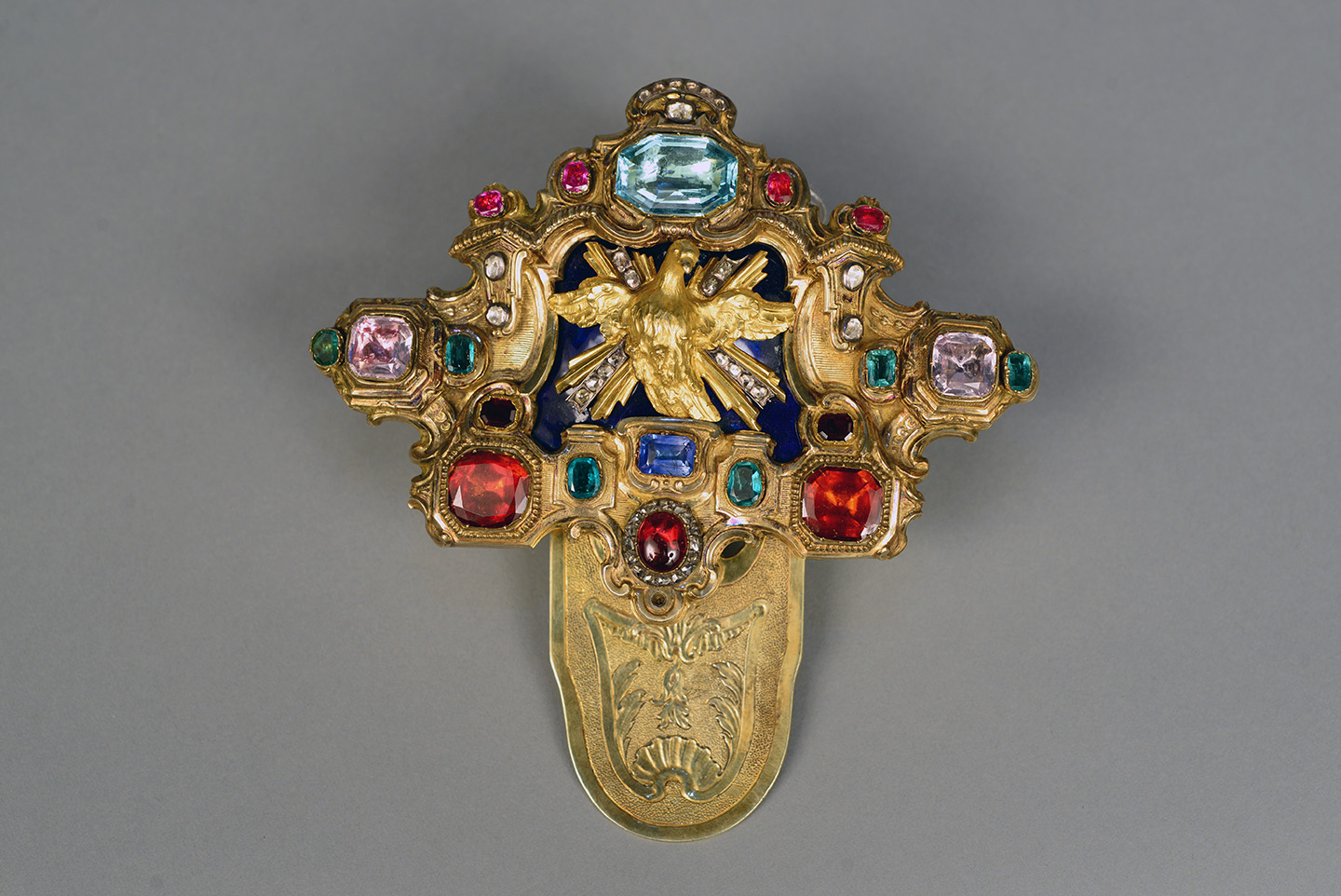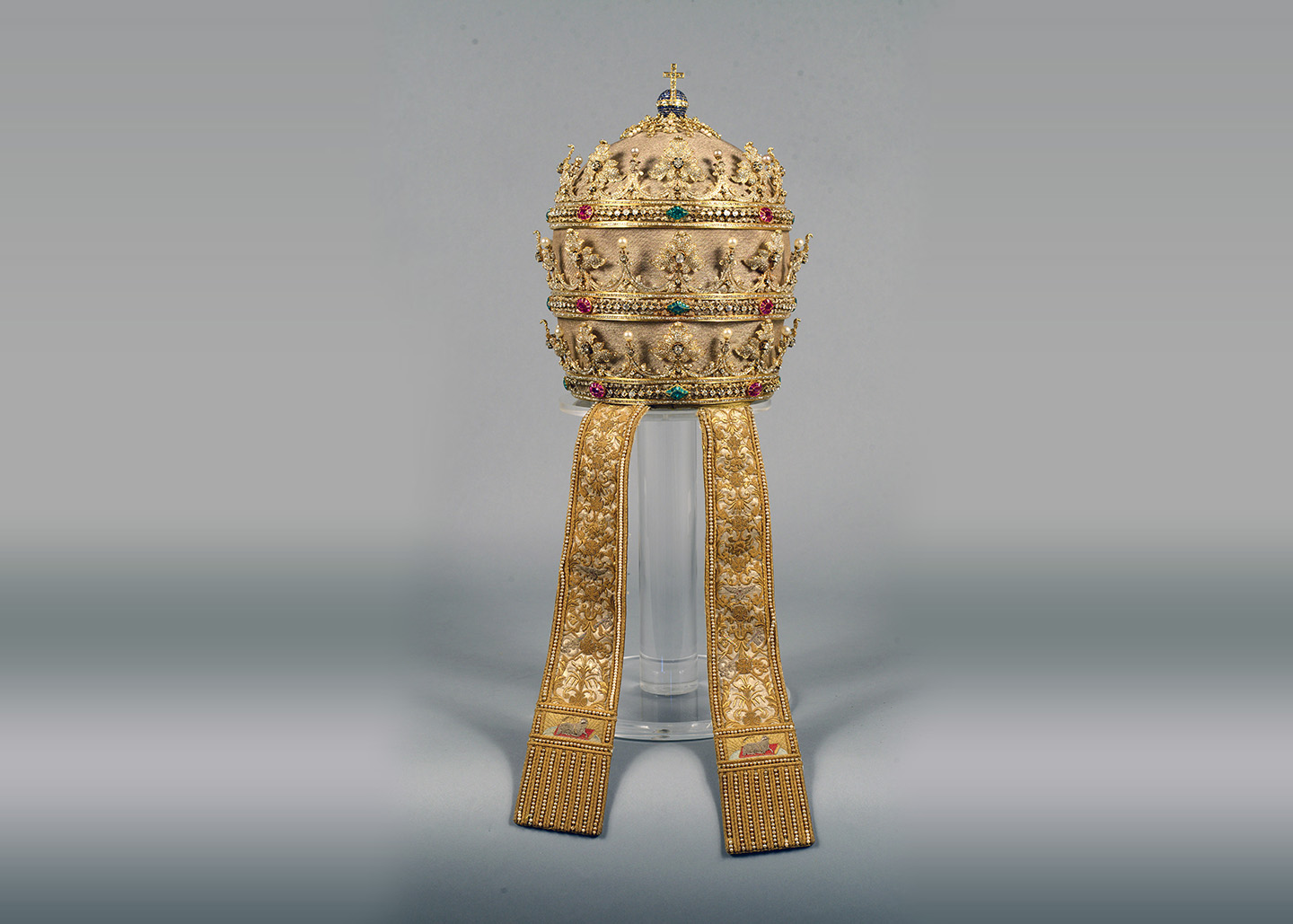Jesus appointed His first disciple, Peter, and those who followed him, to receive the Keys of Heaven and serve as head of the apostles, thereby inaugurating the institution of the Pope and the authority of the Holy See. In developments over the centuries, the Pope became leader of the Roman Catholic Church and sovereign of the city-state at the Vatican. In 1274, after the Second Council of Lyon, the custom for the Pope to be elected by cardinals commenced. And in elections held at the Sistine Chapel since 1492, being Pope has been a lifelong position. In the eleventh century, Pope Gregory VII (1021-1085) also instituted a series of reforms that saw the Holy See begin to take an active part in international affairs and promoting Church ideas. In terms of international relations, it maintained a more detached and neutral position, emphasizing the common rights and dignity of all people in the world. The objects in liturgical ceremonies presided over by the Pope are particularly rich and deep in meaning. The "Keys of St. Peter," for example, represent the Pope's inheritance of authority from Peter, while the three crowns of the papal tiara symbolize the three authorities (triregnum) of the Pope as father of kings, governor of the world, and Vicar of Christ. Selected for this section of the display are the tiaras, garments, accessories, and other ritual objects of thirteen Popes, which are of incomparable sacredness as far as Catholics are concerned.
Jeweled closure of Servant of God Pope Benedict XIII (r. 1724-1730)
- 1729, Rome, ltaly
- Gold, silver, amethysts, aquamarine, emeralds, jacinths, garnets, rubies and other gems
- Length: 14.5 cm, width: 15 cm, height: 3.5 cm
- Collection of the Office for the Liturgical Celebrations of the Supreme Pontiff
This jeweled closure was made in Rome in 1729 and later inherited by the Sagrestia Pontificia in 1834, after the death of Cardinal Giuseppe Albani (1750-1834, Secretary of State from 1829 to 1830).
This cope fastener of Pope Benedict XIII Orsini (r. 1724- 1730) is made of gold, silver-gilt, amethysts, aquamarine, emeralds, jacinths, garnets, rubies and other gems. In the center of a plate chiseled with arabesques in relief, the Holy Spirit is represented in the form of a dove, with four rays containing embedded gems. All around, the fastener is adorned with gemstones: on top a large aquamarine stone, at the two sides two rose gemstones, beneath two big garnets with another garnet in the center surrounded by brilliant stones. All around are six emeralds. The back is decorated with four subjects surrounded by curled arabesques: on the upper part is Our Lady of the Rosary with the child, below is the coat of arms of the Order of Preachers (Dominicans), and at the two sides are Saint Philip Neri and Saint Dominic. On the frame of the coat of arms of the Orsini family and the inscription "Anno Domini MDCCXXIX" dating it to 1729. The Dominican iconography is a reminder that Benedict XIII was a Dominican priest. It is interesting to observe that this rationale is mentioned in the Dizionario di erudizione storico-eclesiastica written by Cav. Gaetano Moroni Romano, the first butler of Pope Gregory XVI, in Volume XV from the year 1844. Therefore, this object is most likely to have been kept in the Sagrestia Pontificia since that date; it is also mentioned in the inventories of 1867-1889, 1870, and afterwards.
Tiara of Blessed Pope Pius IX (r. 1846-1878)
- Made by C. Goettig, W. Deibel, and Carlo Pizzala
- 1854, Mainz, Germany; Madrid, Spain
- Length: 35 cm, width: 24 cm, height: 24 cm
- Collection of the Office for the Liturgical Celebrations of the Supreme Pontiff
This was given by Isabella II of Bourbon (1830-1904), Queen of Spain, in 1854 to Pope Pius IX and used for the first time during the celebration of Christmas mass in the Vatican, San Peter's Basilica. The tiara was made in 1854 by the goldsmiths C. Goettig and W. Deibel di Mainz (Mainz, Germany) and assembled in Madrid by Carlo Pizzala, goldsmith of the royal house of Bourbon.
The tiara's whole frame is made of silver fabric in a "chicory vegetable" form, covered by an elegant weaving of leaves and branches, and crowned by a globe. On the top is a cross between branches, leaves, and gold flowers with pearls and diamonds. The three gold crowns (title below, from 585 to 750 thousandths) are enriched with diamonds, emeralds, rubies, sapphires, aquamarines and embedded pearls. On the top of each crown are decorations with leaves embellished with diamonds and a central diamond of large caliber. For each leaf is a pinnacle decorated with a large pearl. The fabric strips are made of silver foil cloth, with large gold embroideries portraying keys and a dove. Beneath is the image of the lamb on a book. They are embellished with pearls still in good shape.





